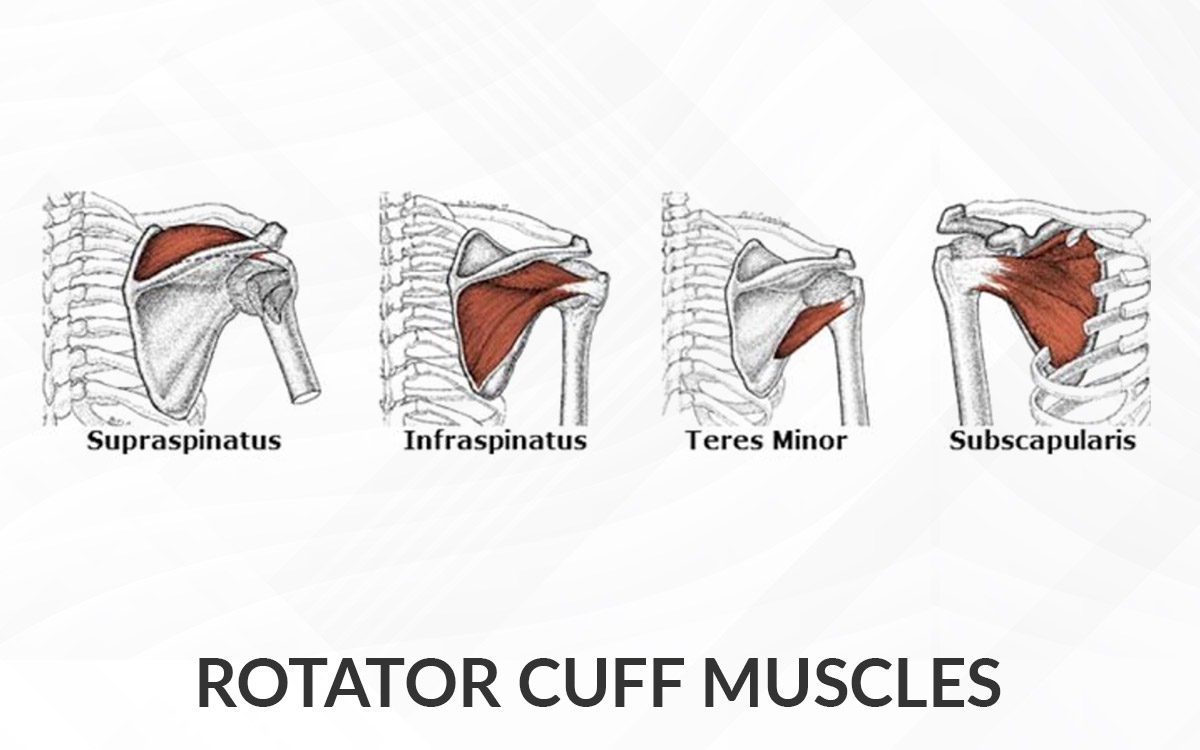
Summary
Causes
- Normal wear and tear
- Repetition of same arm motion
- Acute injury especially in sports
- Certain jobs like building or window cleaning
- Fall on the arm
- Lifting something heavy
Symptoms
- Pain on moving the arm in certain ways or at night when lying on the shoulder
- Weakness in the shoulder
- Trouble in raising the arm
- Clicking or popping on moving the arm
- Difficult to do routine activities such as reaching behind the back, dressing/undressing etc.
- A tear due to fall or sports injury can cause-
- Acute pain
- Bruising
- Weakness of arm
- Snapping or a tearing sensation
Treatment
- Rotator cuff tears do not heal on their own
- Small tears managed through physiotherapy, steroid injections and anti-inflammatory medicines
Surgical Options
- Partial Tear
Keyhole surgery involving trimming or a debridement - Full Thickness Tear
Key hole surgery involving help of anchors and sutures
What is the rotator cuff and what are its functions?
The rotator cuff is a group of four muscles that plays an important role in the movement and stability of the shoulder joint. These four muscles convolute into tendons and form a cuff over the head of the humerus (arm bone). It comprises of supraspinatus, infraspinatus, teres minor and subscapularis. They originate from the shoulder blade (scapula) and attach to the head of humerus onto the special spots known as lesser and greater tuberosity.
These rotator cuff tendons help you to raise and rotate your arm.
What is a rotator cuff tear?
A rotator cuff tear usually happens from normal wear and tear or if you repeat the same arm motion over and over. It can also result from an acute injury especially in sports like baseball or tennis or in jobs like building or cleaning windows. It can also happen if you fall on your arm or you lift something heavy.
There are two kinds of rotator cuff tears. A partial tear where one of the four muscles that forms your rotator cuff is frayed or partly damaged. Second is a complete tear where the tendon gets a tear to the full thickness and comes off the bone.
What are the symptoms of rotator cuff tear?
You cannot always feel a torn rotator cuff but in some cases you will feel pain in the front of your shoulder that can radiate down to the side of shoulder right up to the tip of the hands.
You may feel pain when you move your arm in certain ways or especially in the night when you lie on your shoulder. Along with it there may be weakness in your shoulder and there may be trouble raising your arm. Sometimes you will hear clicking or popping when moving your arm. It may be difficult to do routine activities such as reaching behind your back, dressing/undressing, combing your hair etc.
If the tear has occurred after a fall or a sports injury you may experience acute pain, bruising, weakness of arm, snapping sensation or a tearing sensation.
If you do not do anything about a torn rotator cuff you can have problems in the future like a frozen shoulder or arthritis which is then much harder to treat. Also, pain may continue to become worse and strength may decrease if you do not see the doctor as the tear can become larger. So see your doctor if you have any of the above signs.
What will happen when I see the doctor?
Your doctor will take a brief history as to the mechanism of the injury and examine your shoulder. During the examination he will check the range of motion and muscle strength. In addition your doctor may do an x-ray followed by an ultrasound scan or a MRI scan to assess the quality of muscles or tendons, to assess the size of tear or to assess the impingement.
Can a rotator cuff tear heal without surgery?
Rotator cuff tears do not heal on their own. However, small tears and depending on age and activity levels, a good function can be achieved without surgery; by doing physiotherapy to the remaining muscles and strengthening them. Pain can be managed with steroid injections and anti-inflammatory medications.
However, if you have a large tear or you do a lot of sports or heavy work then surgery is most often recommended.
What are the surgical options?
Partial tear can be treated with a keyhole surgery at which time a trimming or a debridement is performed. A full thickness tear will be reattached at the insertion site directly onto the bone with the help of anchor and sutures. This will be done with a keyhole surgery.
After the surgery you will be seen by a physiotherapist where further rehabilitation to regain strength and function of the shoulder will be discussed with you. You will be given a sling which you will have to wear for six weeks. You will have to keep the wound dry for two weeks. Driving will be around six weeks. Repaired tendons take 3 months to heal and shoulder improves for 9-12 months.
BMI Chelsfield Park Hospital
Bucks Cross Road Chelsfield ORPINGTON BR6 7RG
01689 877855
BMI The Blackheath Hospital
40-42 Lee Terrace Blackheath LONDON SE3 9UD
020 8318 7722
BMI The Sloane Hospital
125 Albemarle Road BECKENHAM BR3 5HS
020 8466 4000
Princess Royal University Hospital
Farnborough Common ORPINGTON BR6 8ND
01689 863223



